|
What is photocatalyst?
Photocatalyst, also known as "photocatalysis", mainly utilizes solar energy for environmental purification and energy conversion.
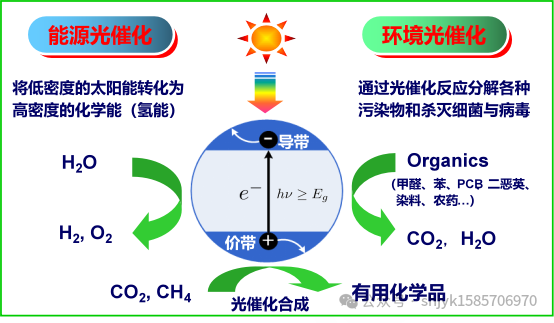
Photocatalyst technology has been widely applied in the civilian sector in developed countries and regions such as Japan. Its active ingredients, upon absorbing ultraviolet rays from sunlight or artificial lighting sources, undergo oxidation and reduction reactions, generating hydroxyl radicals and superoxide radicals. These radicals can react with organic substances, breaking the molecular bonds of organic compounds (such as C-C, C-H, C-N, C=O, N-H, etc.), and decomposing harmful substances and microorganisms in the air into harmless carbon dioxide and water. The working mechanism is illustrated as follows:

In response to market demands and customer needs, our company has been the first in China to develop a photocatalyst finishing agent that can be used in textile processing. It functions effectively under both visible light and ultraviolet light conditions.
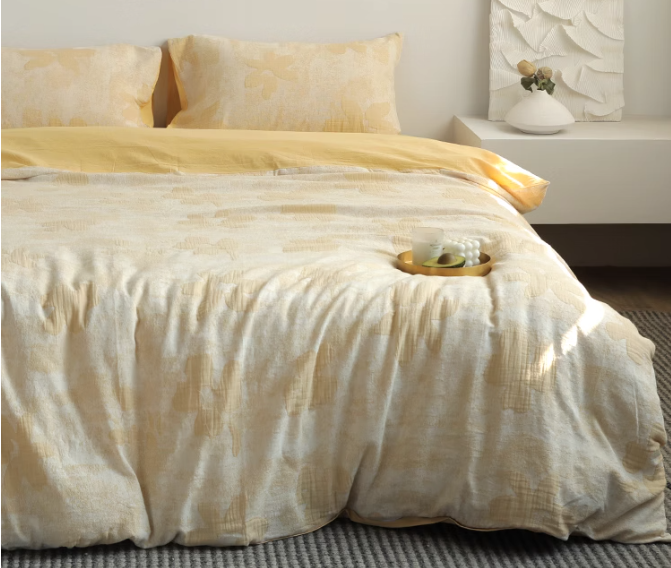
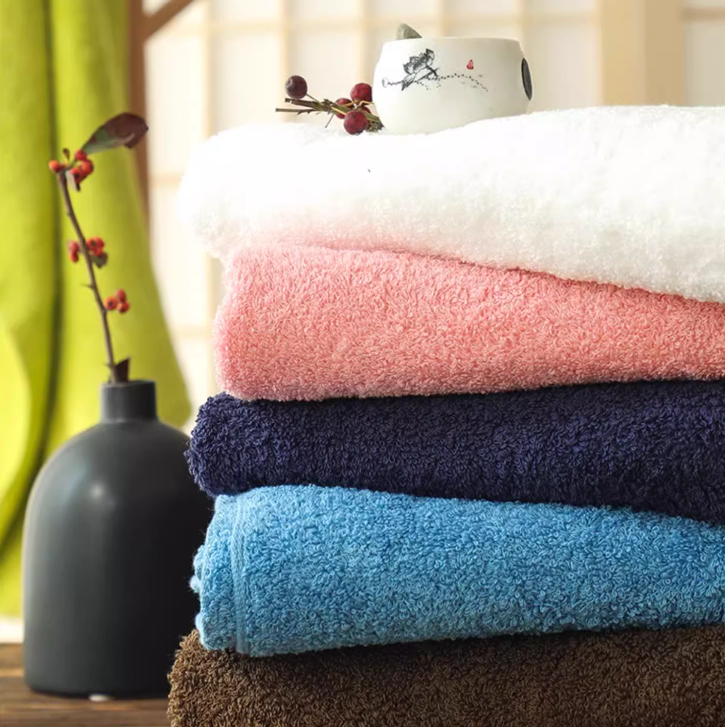 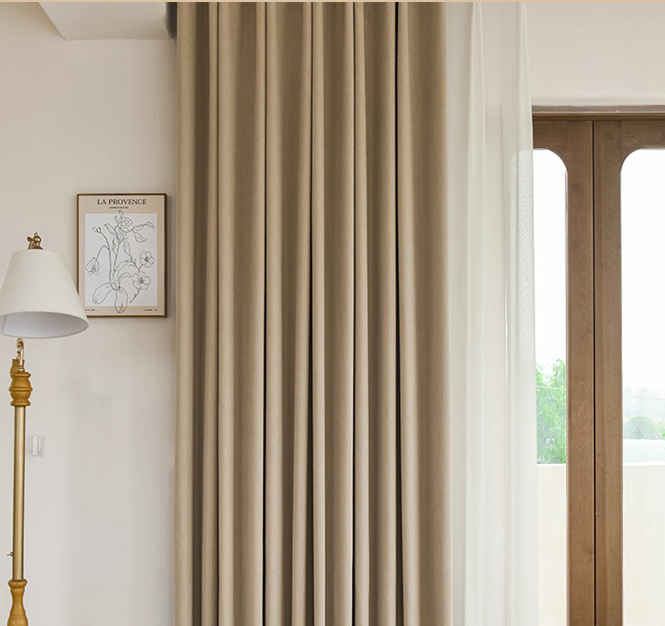 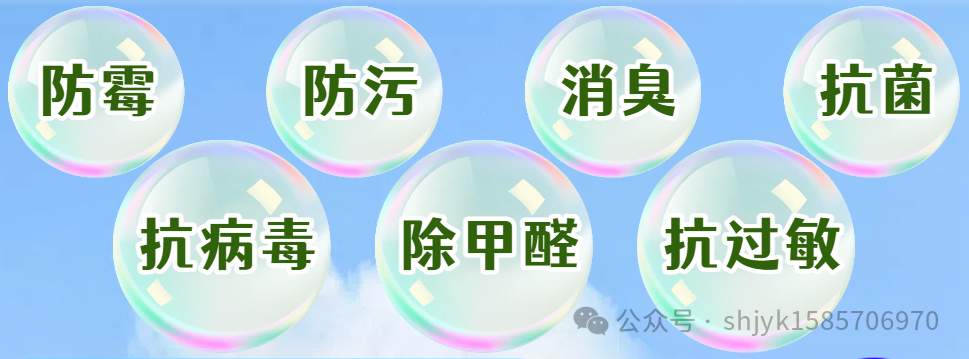
The following is the performance test result of the developed photocatalyst finishing agent applied to textiles:
1. Formaldehyde Removal Performance
According to Appendix D of QB/T 2761-2024, "Test for Purification of Gaseous Pollutants (Slow-release Method)", the formaldehyde removal rate of the tested sample was 67.16%, demonstrating good formaldehyde removal performance.
Note: For test conditions, please refer to the test report.
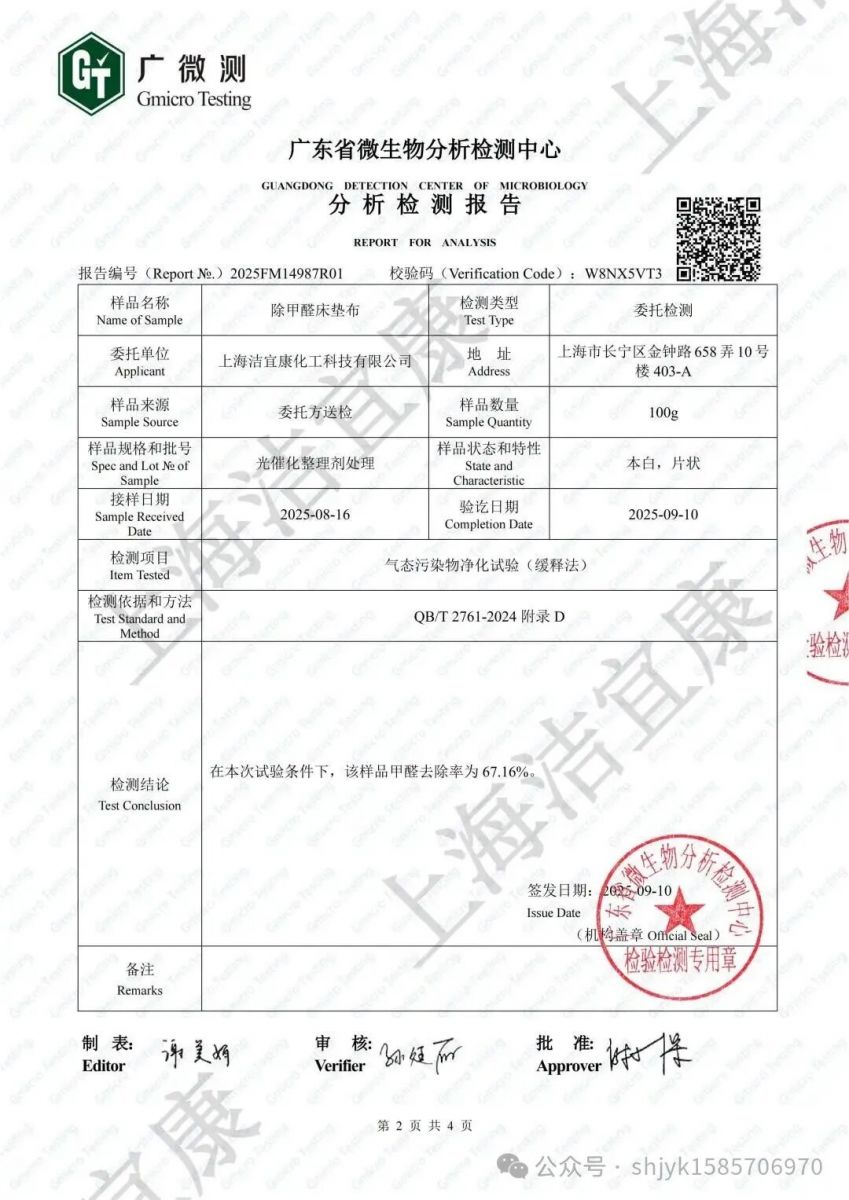
备注:测试条件请参见测试报告。
2. Photocatalytic Antibacterial Performance under Visible Light Conditions (Chinese National Standard)
According to the Chinese national standard GB/T 30706-2014 "Test Methods and Evaluation of Antibacterial Properties of Photocatalytic Antibacterial Materials and Products under Visible Light Irradiation", the antibacterial rates of Staphylococcus aureus and Escherichia coli on the tested samples were both 99%, and the contribution rate of light was 67%. The test results show that the fabrics treated with the photocatalytic finishing agent developed by our company have good antibacterial performance under visible light conditions and also have good washing resistance.
Note: For the test conditions, please refer to the test report.
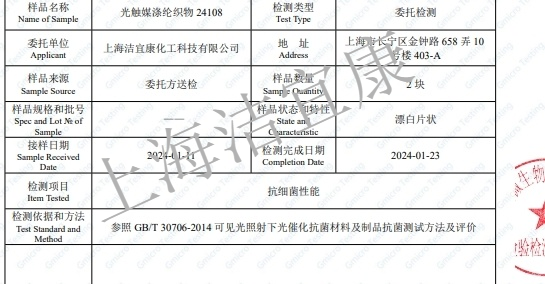 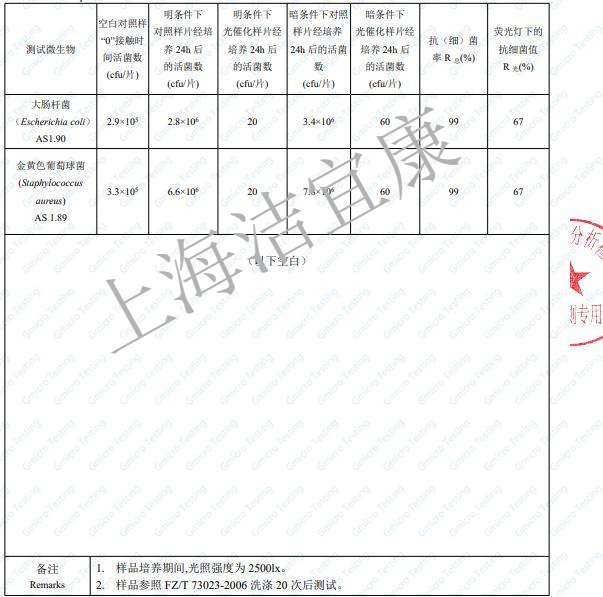 3. Antibacterial Performance of Photocatalyst under Ultraviolet Conditions (Chinese National Standard)
According to the Chinese national standard GB/T 23763-2009 "Evaluation of Antibacterial Performance of Photocatalytic Antibacterial Materials and Products", the antibacterial rate of Staphylococcus aureus of the tested samples is greater than 99%, and the antibacterial rate of Escherichia coli is 99% (with the contribution of ultraviolet light being 80%). The test shows that under ultraviolet conditions, it has more obvious antibacterial performance and good washing resistance.
Note: For test conditions, please refer to the test report.
4. Photocatalytic Antibacterial Performance under Ultraviolet Conditions (Japanese Standard)
According to the Japanese standard JIS R 1702:2020, the antibacterial activity value of Staphylococcus aureus on the tested samples under ultraviolet conditions was 3.6, with a light contribution rate of 1.9; the antibacterial activity value of Pseudomonas aeruginosa was 3.6, with a light contribution rate of 1.0. The test results show that the fabrics treated with the photocatalytic finishing agent developed by our company have obvious photocatalytic activity, can produce good antibacterial effects, and have good washing resistance.
Note: For test conditions, please refer to the test report.
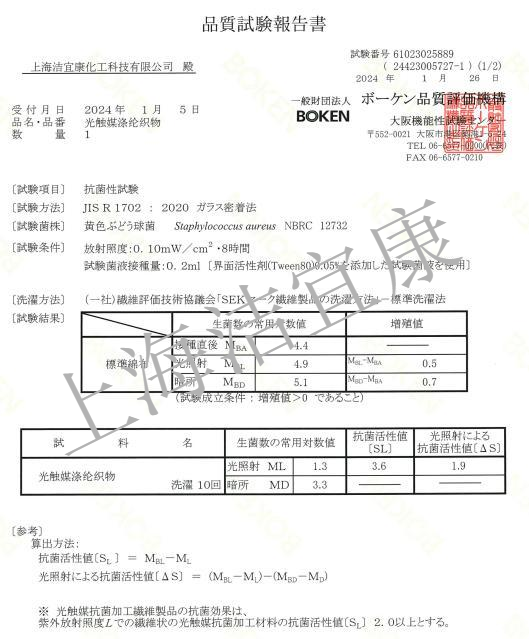 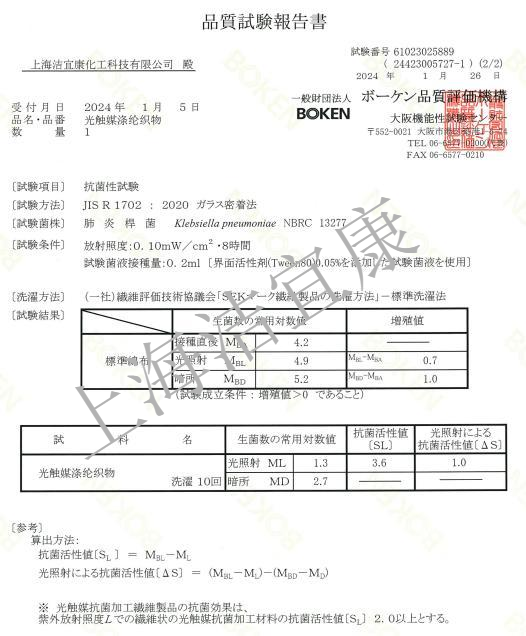
V. Photocatalytic Deodorization Performance under Ultraviolet Conditions (Japanese Standard)
According to the Japanese standard: (The Fiber Evaluation Technology Association) SEK MARK Fiber Product Certification Standard 22. Photocatalytic Deodorization Test (Horizontal Tube Method) (under ultraviolet conditions), the ammonia deodorization rate of the tested samples under bright conditions was 99%, and the acetaldehyde deodorization rate was 98%; the photocatalytic effect of ammonia was 38%, and that of acetaldehyde was 84%. The test results show that the fabrics treated with the photocatalytic finishing agent developed by our company have obvious photocatalytic activity, can produce good deodorization effects, and have good washing resistance.
Note: Please refer to the test report for the test conditions.
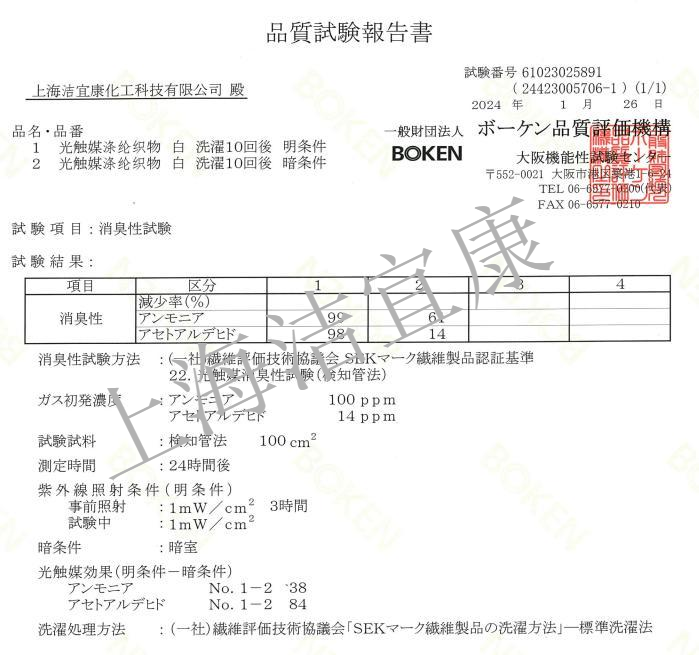 VI. Photocatalyst's Antiviral Performance under Ultraviolet Conditions
According to ISO 18184:2019 "Textiles - Determination of antiviral activity of textiles", the antiviral activity rate of the test sample against Influenza A virus H1N1 is greater than 99%. The test shows that under ultraviolet conditions, it has more obvious antiviral performance and good washing resistance.
Note: For test conditions, please refer to the test report.
VII. Photocatalytic Negative Oxygen Ion Generation Performance under Ultraviolet Conditions
According to the Chinese national standard GB/T 30128-2013 "Textiles - Detection and Evaluation of Negative Ion Generation Quantity", the negative oxygen ion generation quantity of the tested sample reached 631. The test indicates that under ultraviolet conditions, it has a significant negative oxygen ion generation performance and good washing resistance.
Note: For test conditions, please refer to the test report.
Shanghai Jiecon Chemicals Hi-Tech Co., Ltd., relying on the profound technical accumulation from years of in-depth industry experience and adhering to the pioneering and innovative spirit, has independently developed the invention patents of "Fabric Deodorizing Agent Finishing Liquid, Its Application and Manufacturing Method of Photocatalytic Deodorizing Fabric" and "Photodeodorizing Catalyst, Its Preparation Method and Its Application".
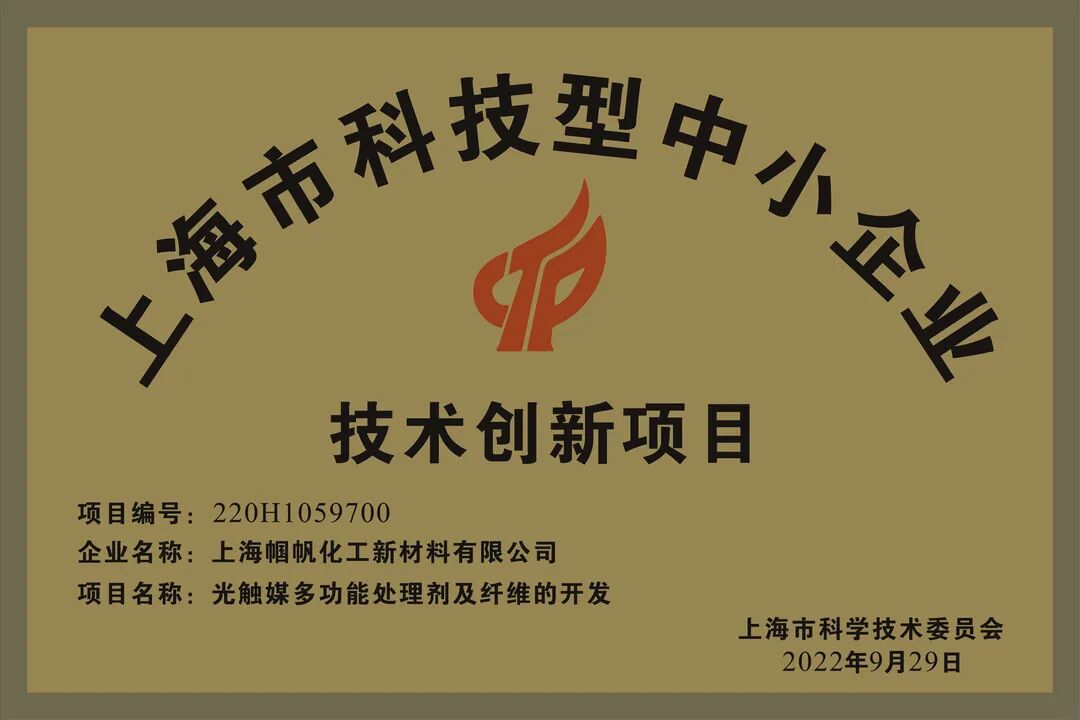
We welcome interested customers and friends to contact us actively and jointly develop functional products that meet your needs.
|